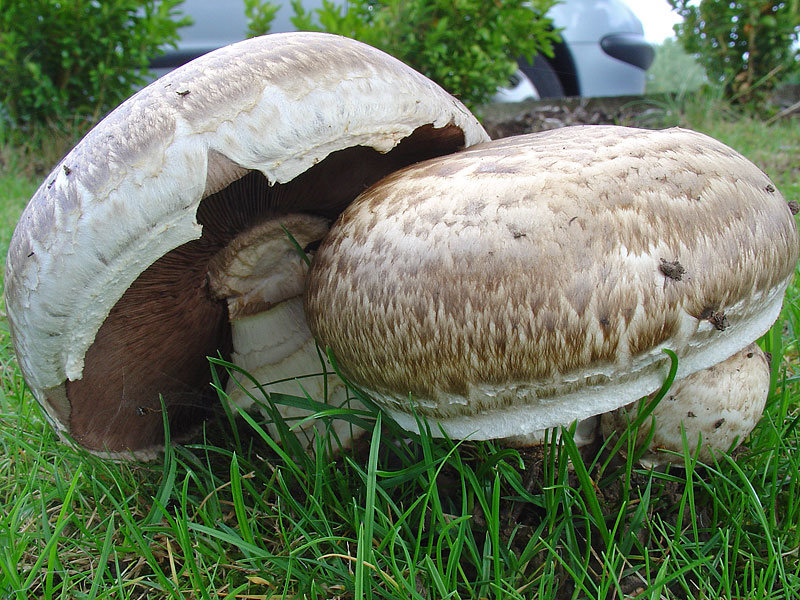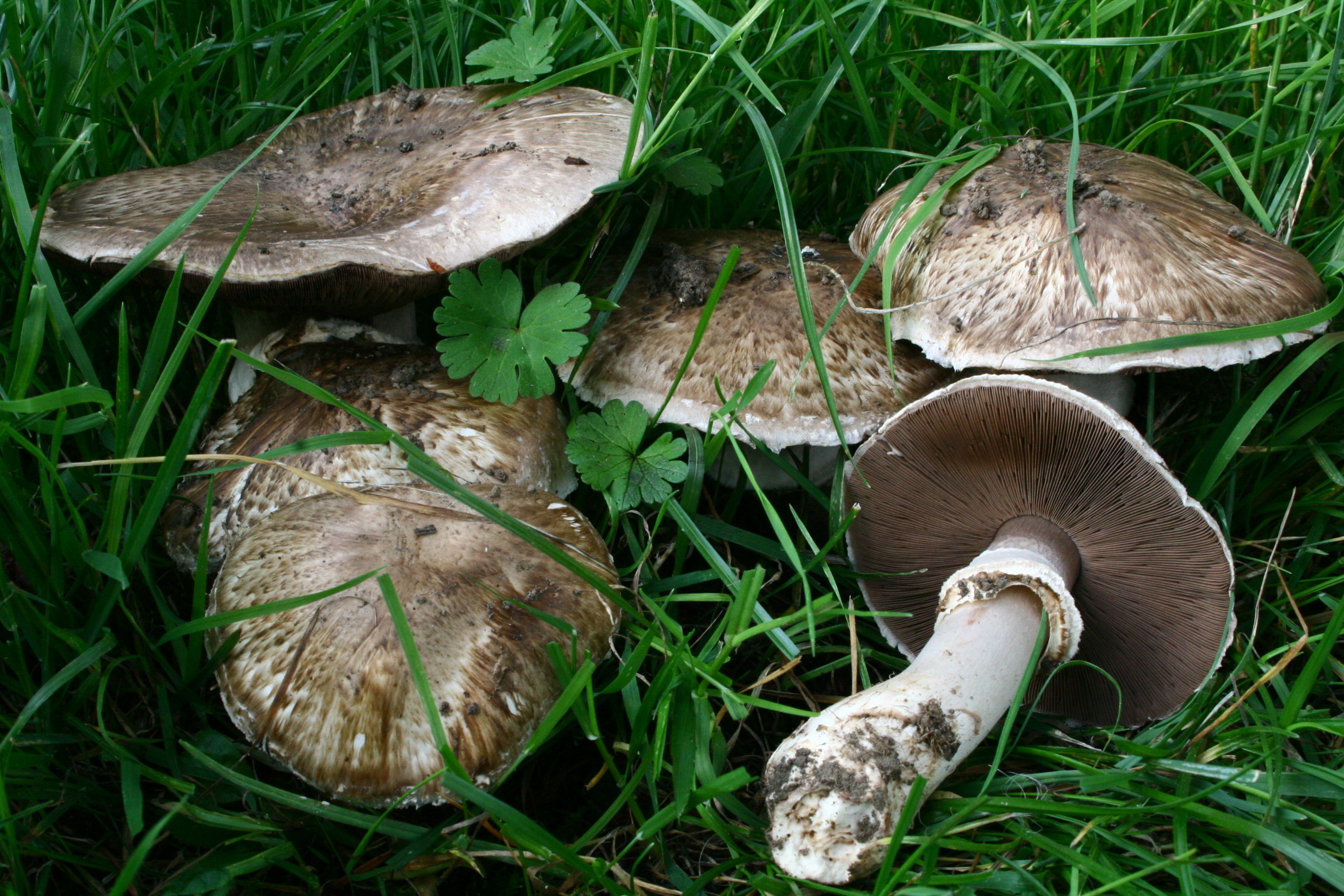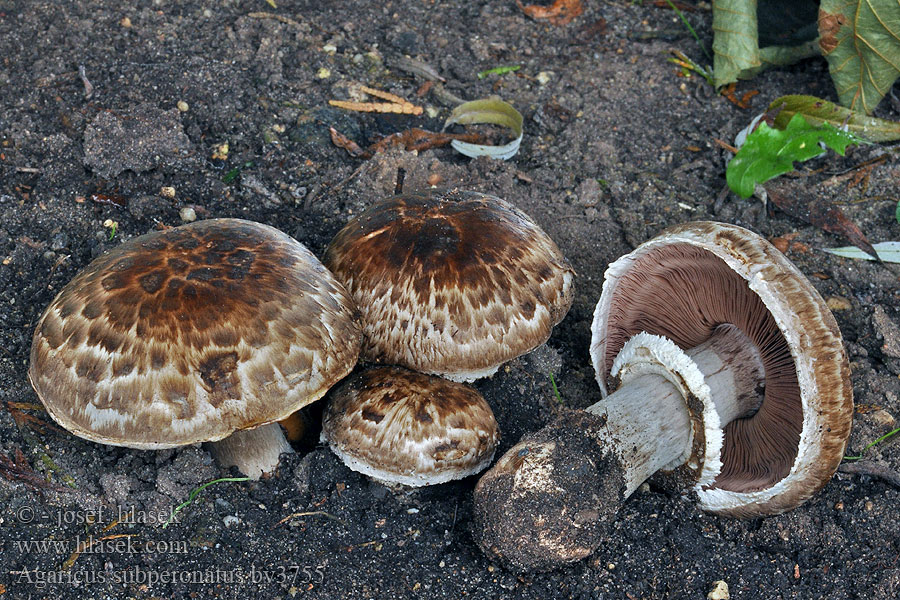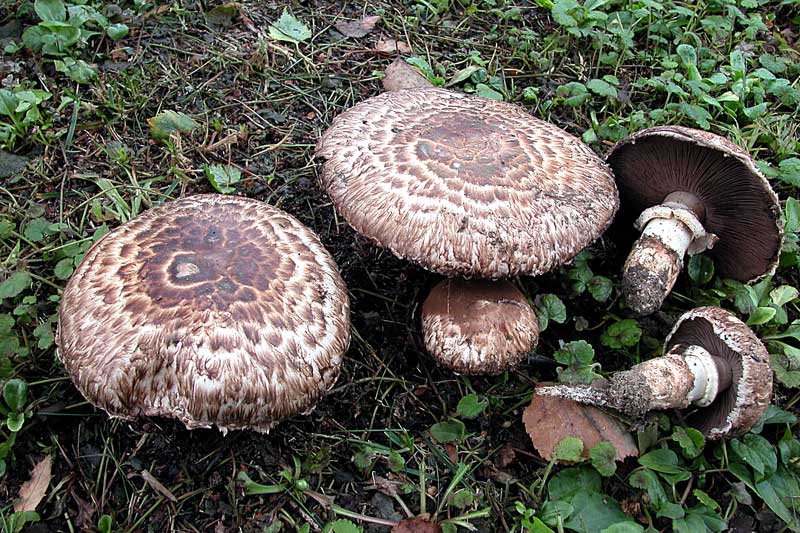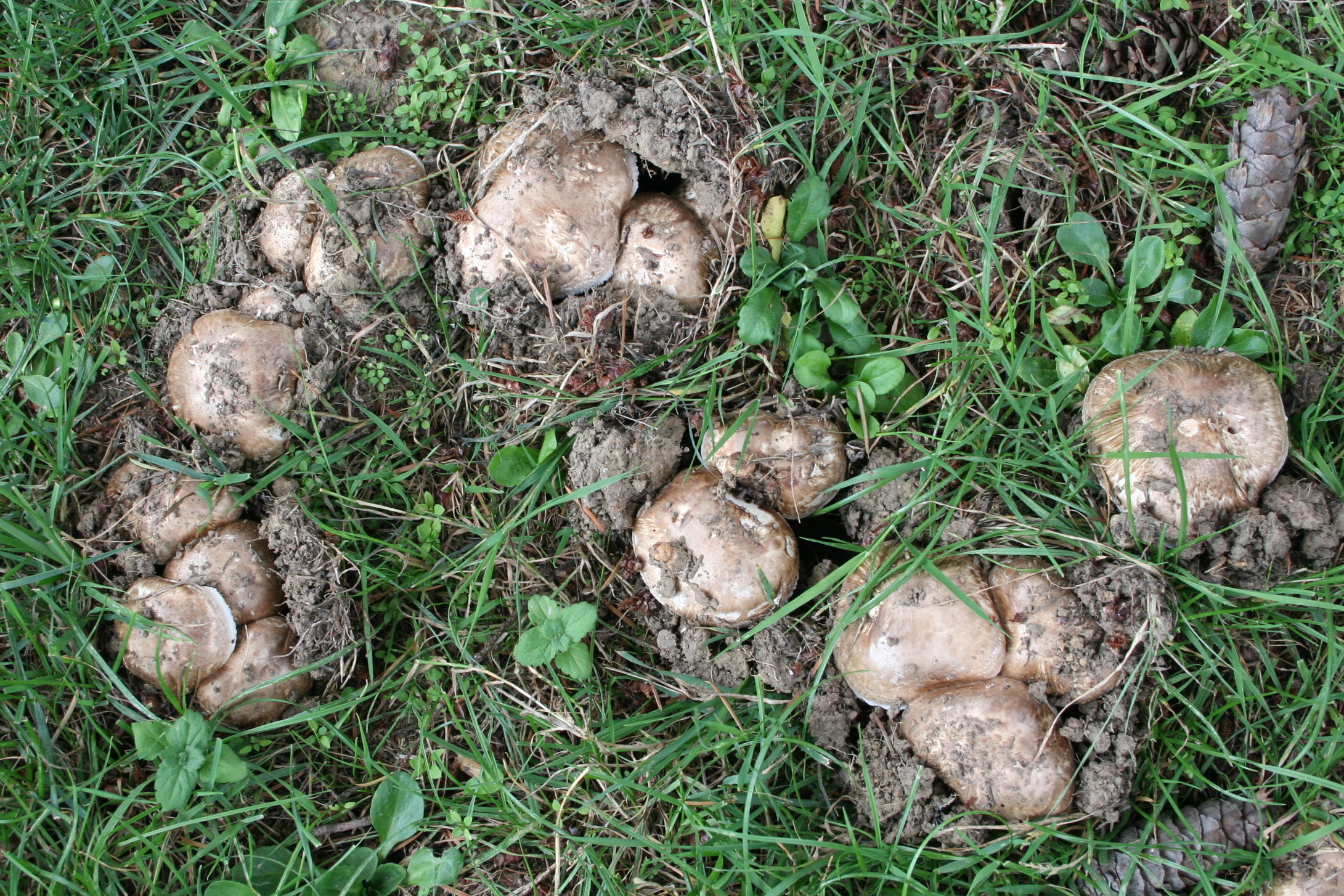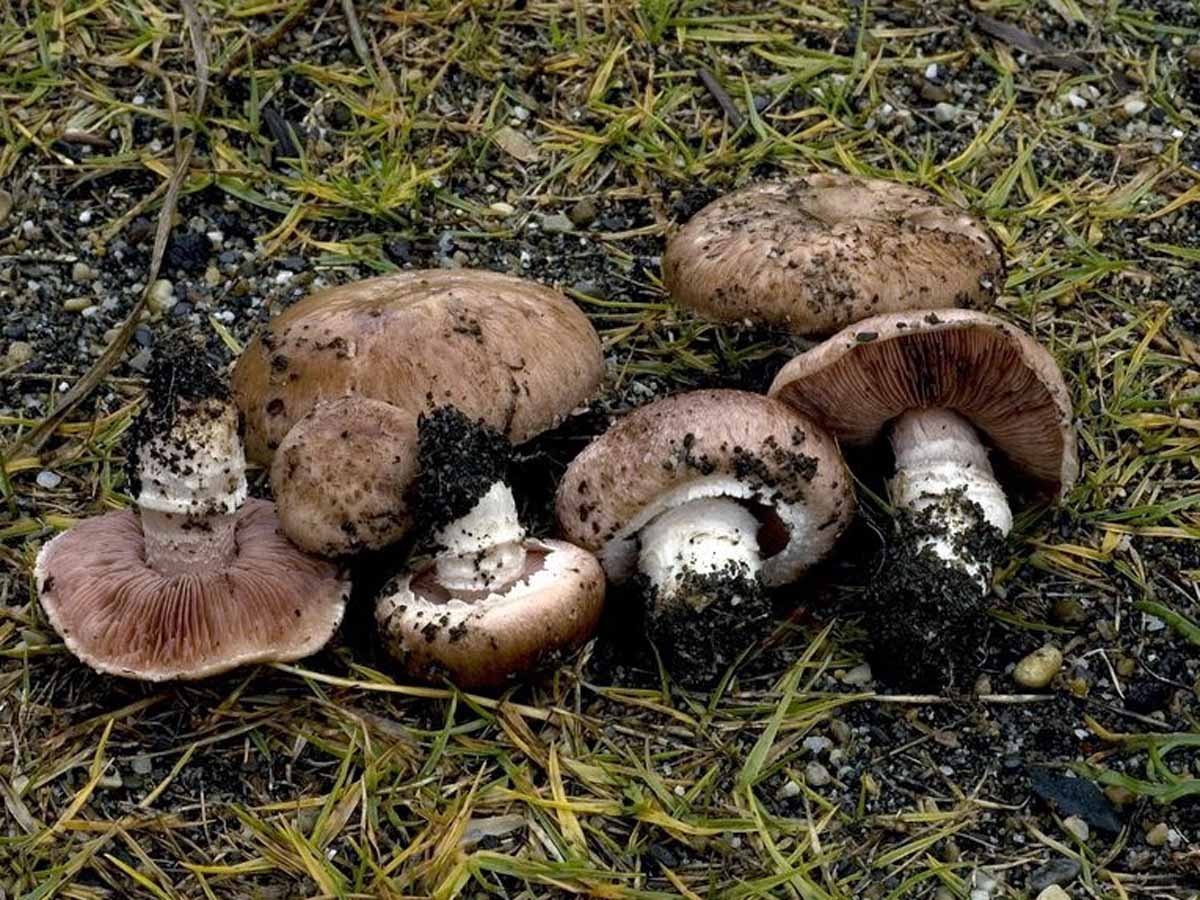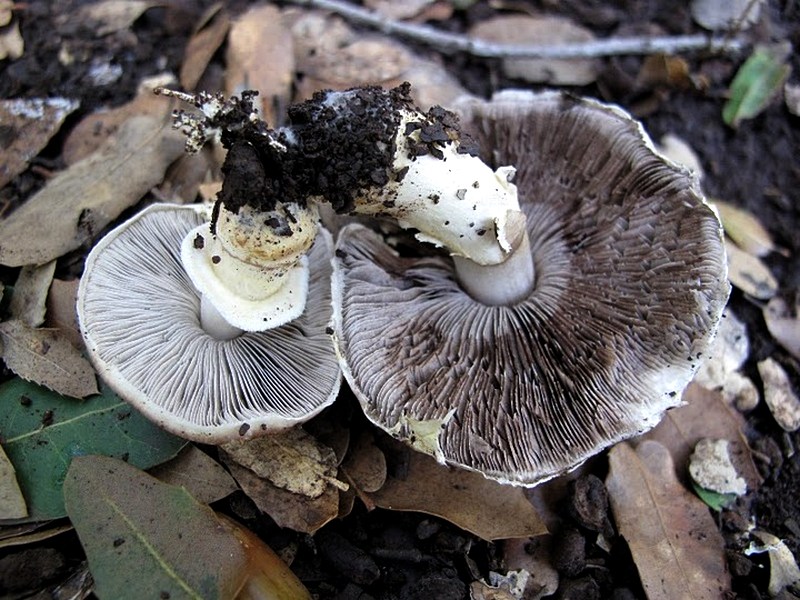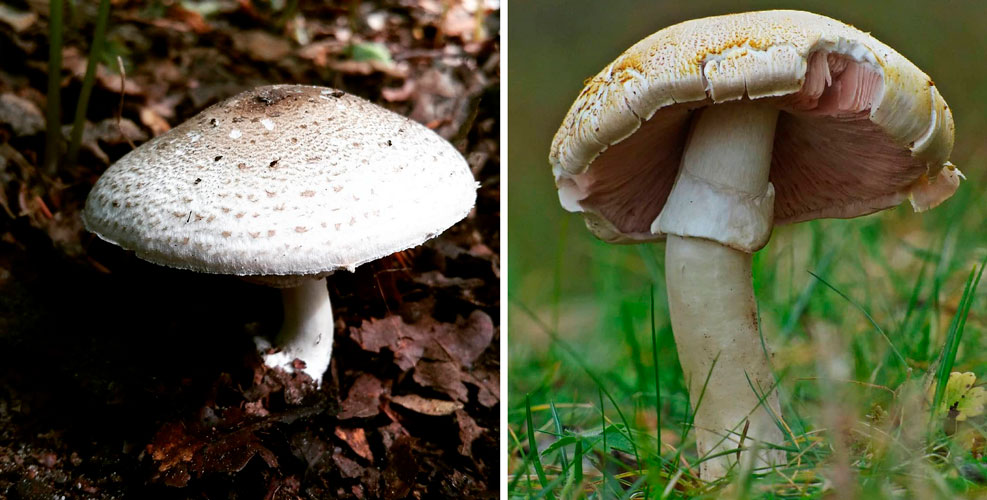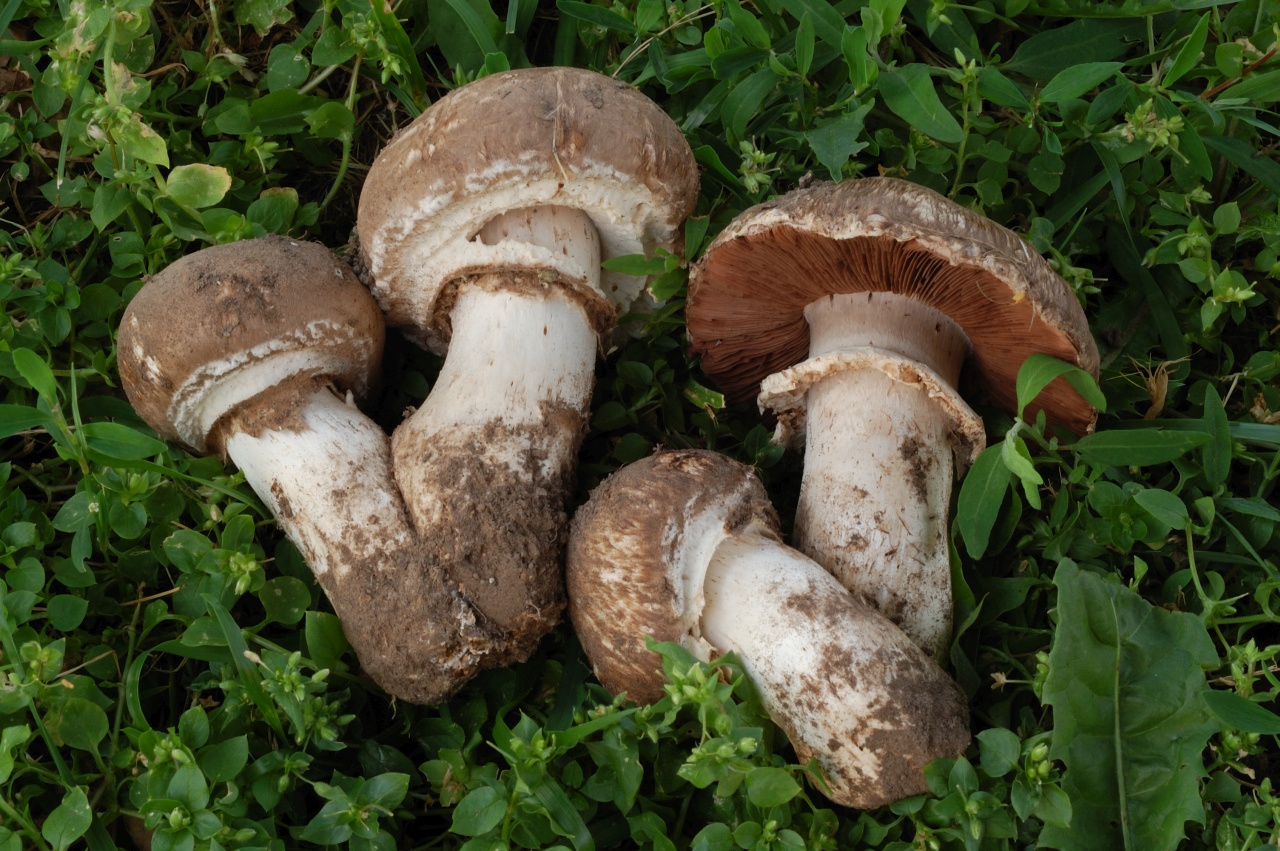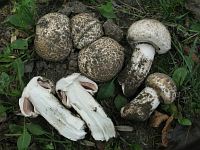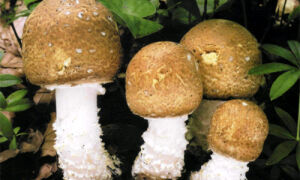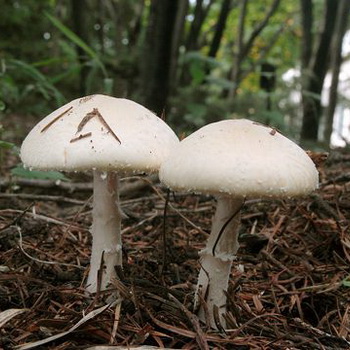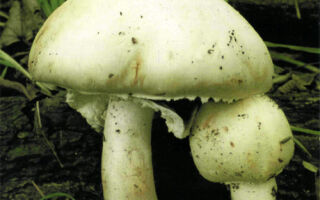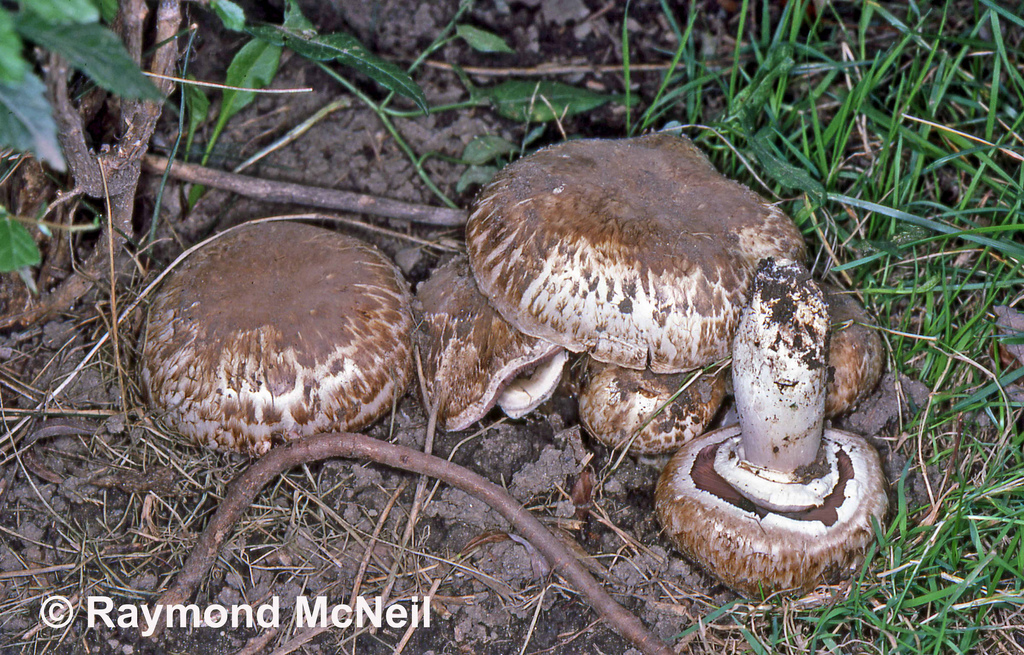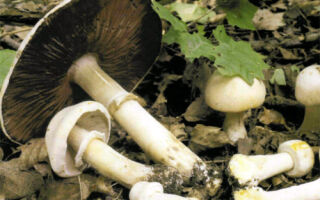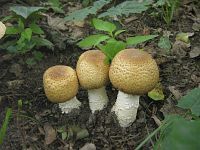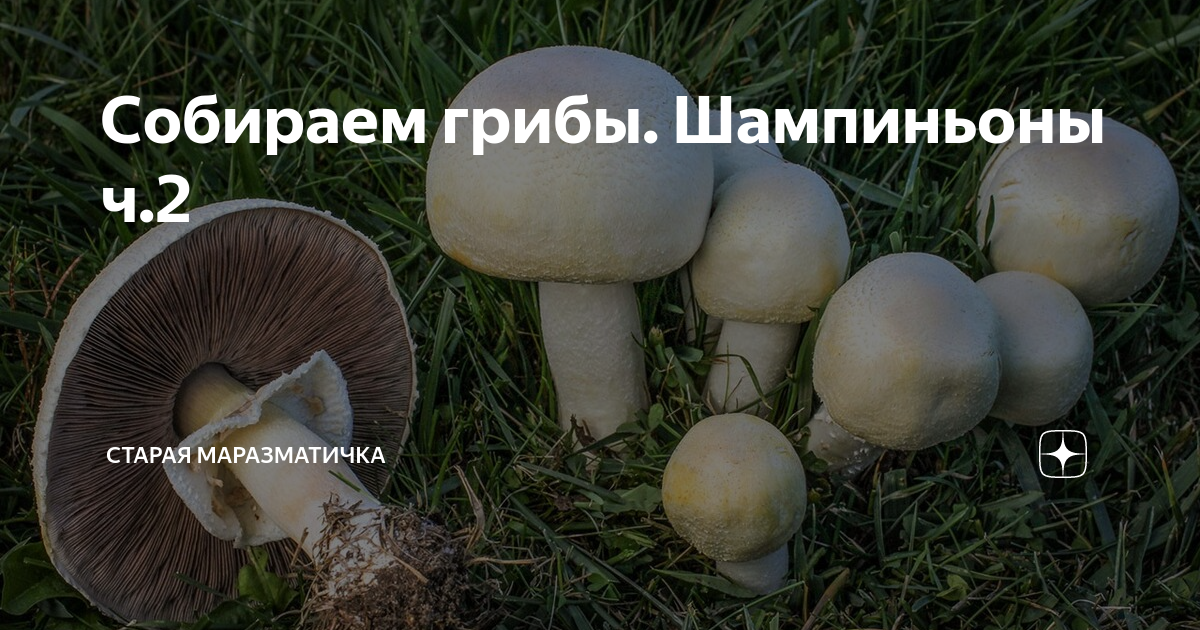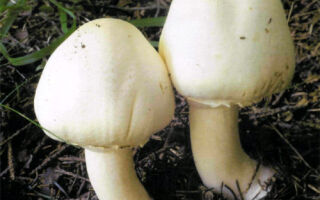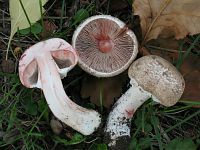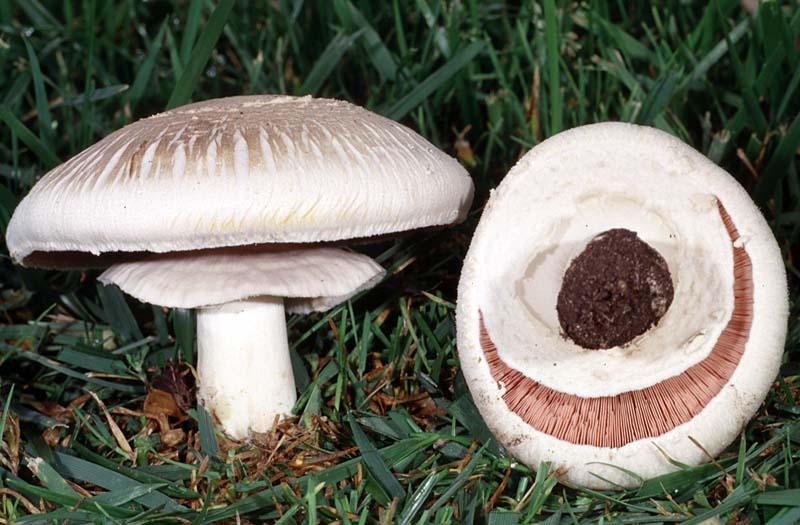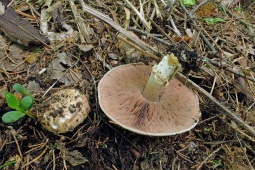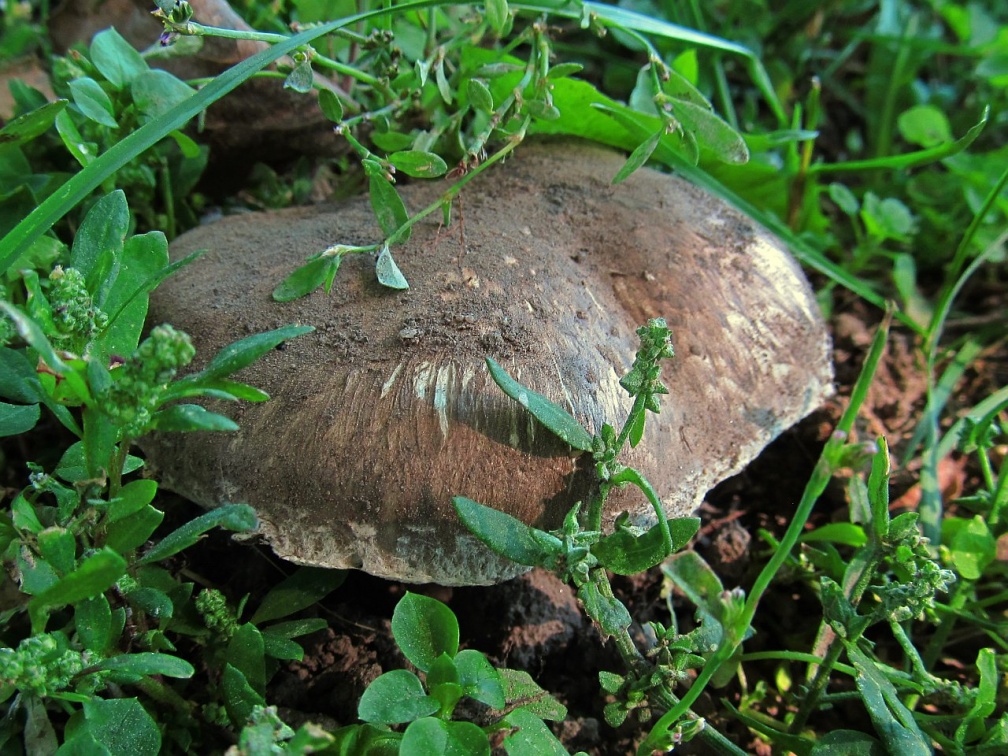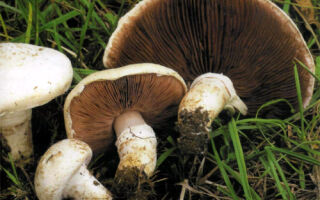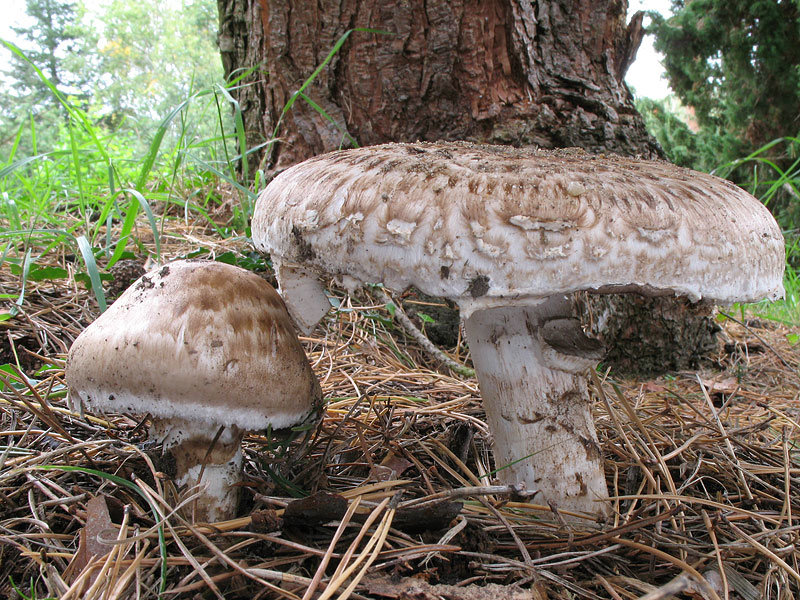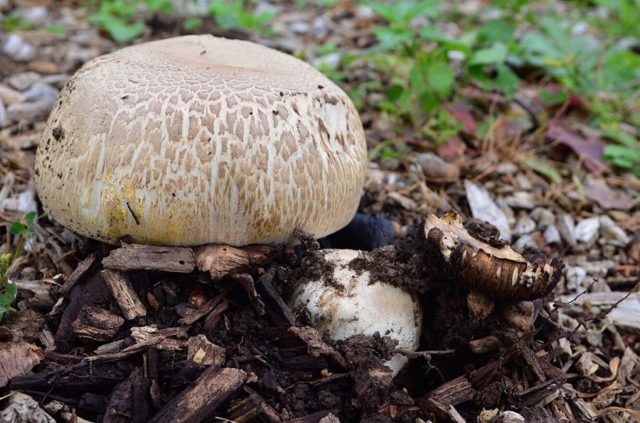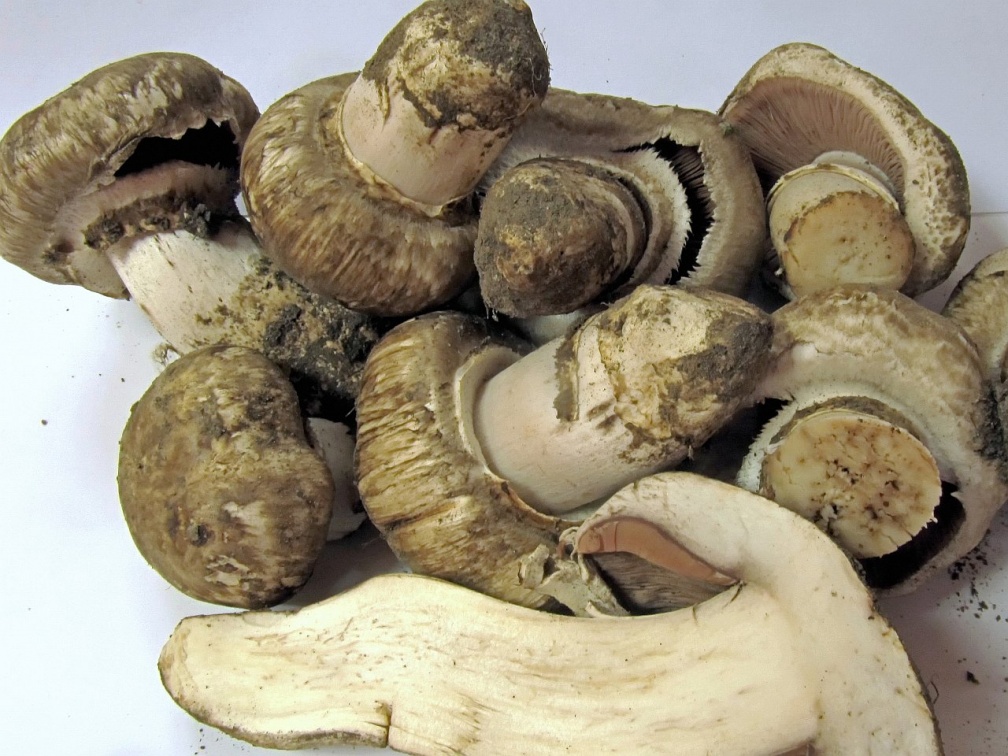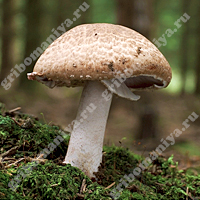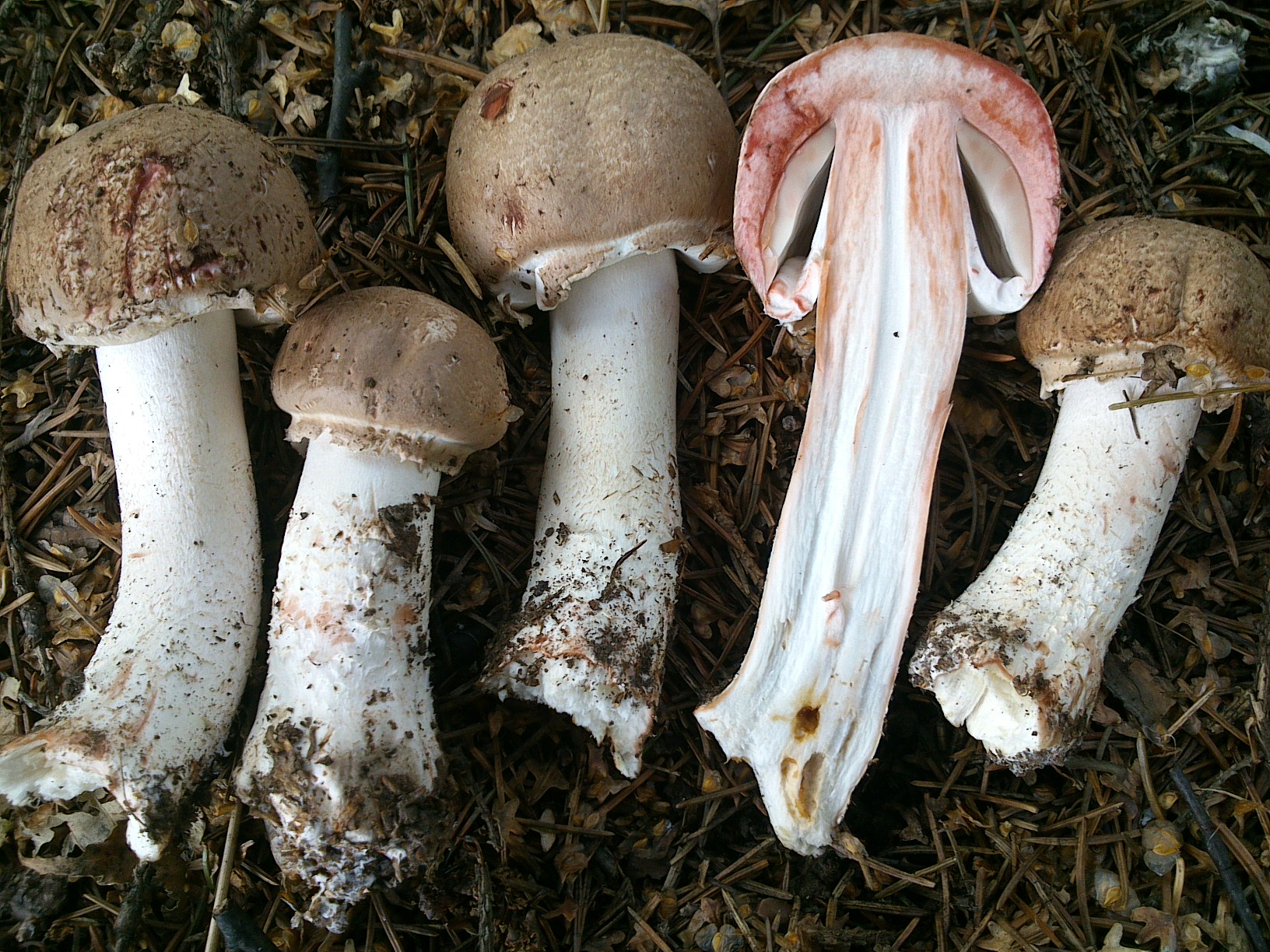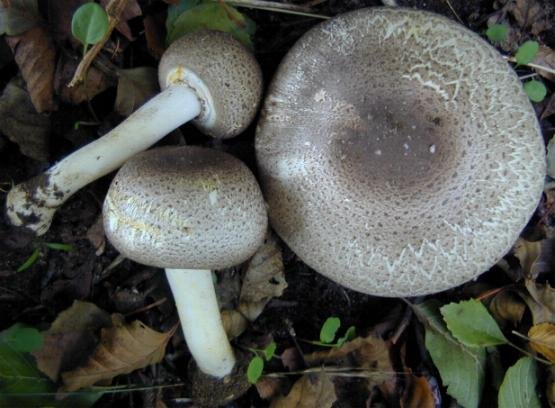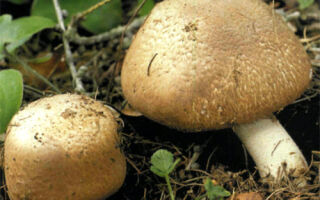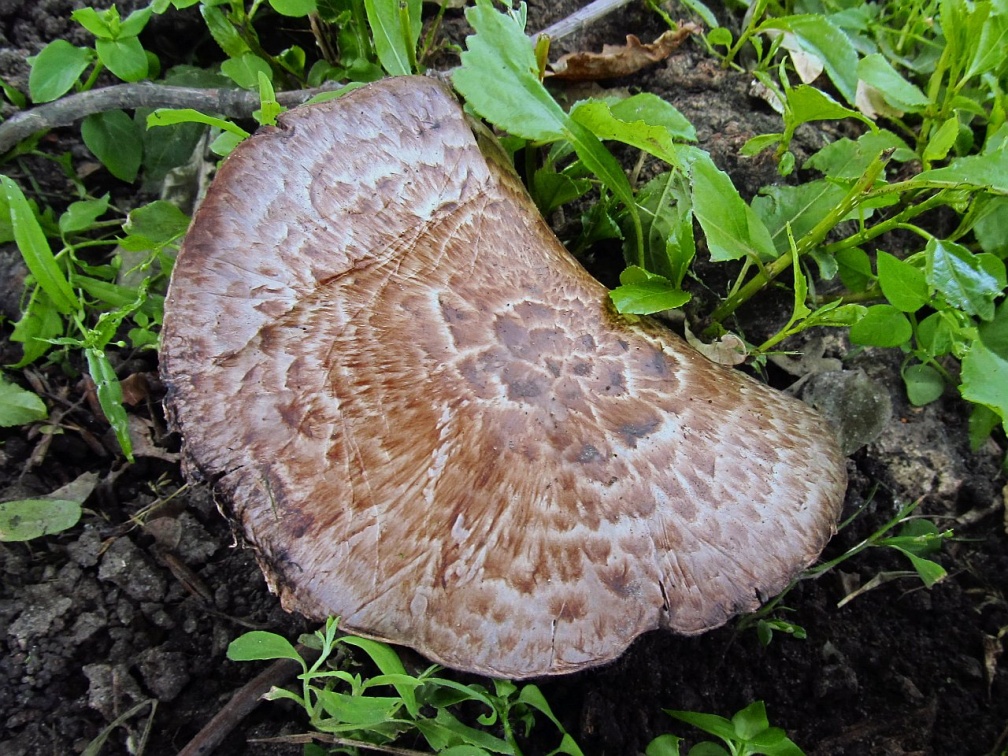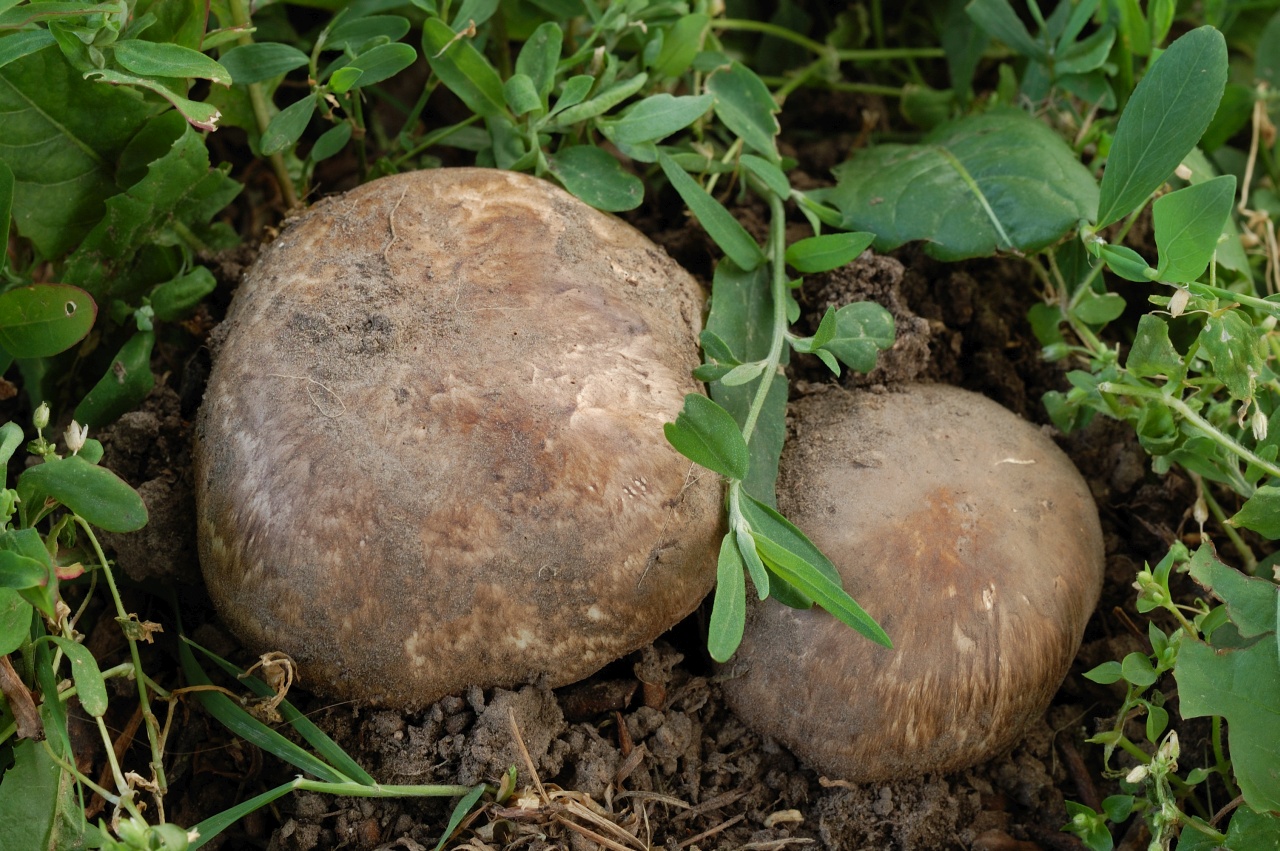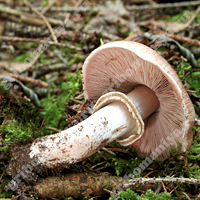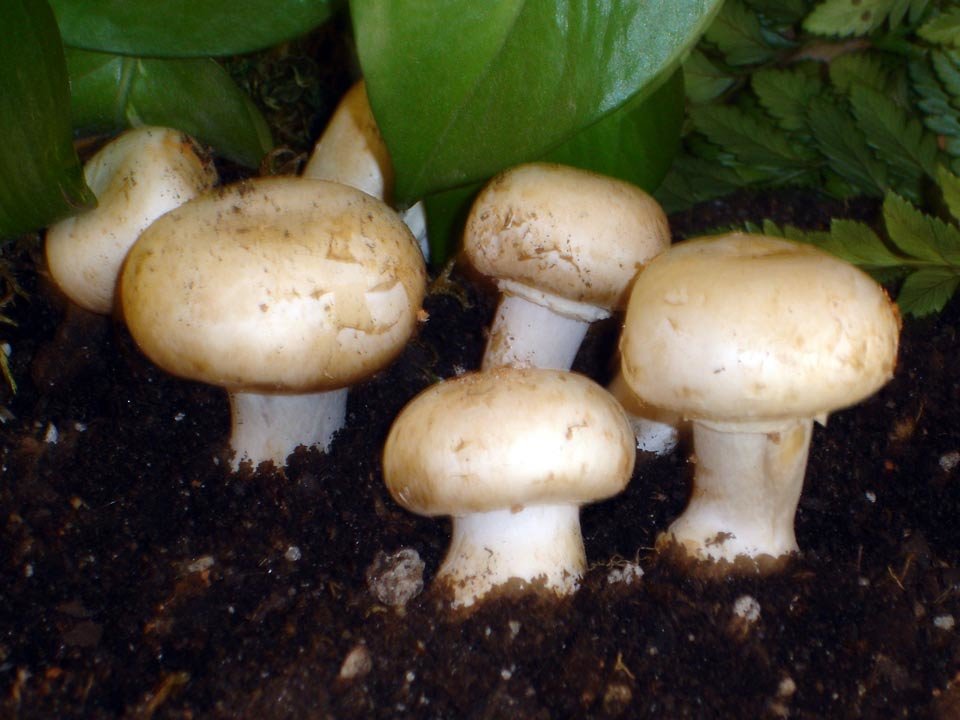Definitioner
- Schaeffer's reaction
-
Schaeffer's cross-reaction: a strip of aniline solution (C6H5NH), and then, crossing it, a strip of 65% nitric acid (HNO3). With a positive reaction, a chrome-yellow spot appears at the intersection, then the color turns to orange-red.
Schaeffer's reaction is an important intrageneric trait for the genus Agaricus. Suitable for material stored for a long time in the herbarium.
Discovered in 1933 by Julius Schäffer (German Julius Schäffer; 1882-1944).
- Basidia (Basidia)
-
Lat. Basidia. A specialized structure of sexual reproduction in fungi, inherent only in Basidiomycetes. Basidia are terminal (end) elements of hyphae of various shapes and sizes, on which spores develop exogenously (outside).
Basidia are diverse in structure and method of attachment to hyphae.
According to the position relative to the axis of the hypha, to which they are attached, three types of basidia are distinguished:
Apical basidia are formed from the terminal cell of the hypha and are located parallel to its axis.
Pleurobasidia are formed from lateral processes and are located perpendicular to the axis of the hypha, which continues to grow and can form new processes with basidia.
Subasidia are formed from a lateral process, turned perpendicular to the axis of the hypha, which, after the formation of one basidium, stops its growth.
Based on morphology:
Holobasidia - unicellular basidia, not divided by septa (see Fig. A, D.).
Phragmobasidia are divided by transverse or vertical septa, usually into four cells (see Fig. B, C).
By type of development:
Heterobasidia consists of two parts - hypobasidia and epibasidia developing from it, with or without partitions (see Fig. C, B) (see Fig. D).
Homobasidia is not divided into hypo- and epibasidia and in all cases is considered holobasidia (Fig. A).
Basidia is the place of karyogamy, meiosis and the formation of basidiospores. Homobasidia, as a rule, is not functionally divided, and meiosis follows karyogamy in it. However, basidia can be divided into probasidia - the site of karyogamy and metabasidia - the site of meiosis. Probasidium is often a dormant spore, for example in rust fungi. In such cases, probazidia grows with metabasidia, in which meiosis occurs and on which basidiospores are formed (see Fig. E).

See Karyogamy, Meiosis, Gifa.
- Pileipellis
-
Lat. Pileipellis, skin - differentiated surface layer of the cap of agaricoid basidiomycetes. The structure of the skin in most cases differs from the inner flesh of the cap and may have a different structure. The structural features of pileipellis are often used as diagnostic features in descriptions of fungi species.
According to their structure, they are divided into four main types: cutis, trichoderma, hymeniderma and epithelium.
See Agaricoid fungi, Basidiomycete, Cutis, Trichoderma, Gimeniderm, Epithelium.
Description
Hat
Sizes reach from 5 to 15, sometimes up to 20 centimeters. The shape of the cap is in the form of a hemisphere, closed, over time it straightens out and becomes convex-outstretched. On the edges of the cap, scraps of a membranous veil covering the hymenophore (spore-bearing layer) are visible.
The skin color is yellowish or golden in color, dull brown scales are located over the entire surface, in youth they are orange-brown, towards the center of the cap they become more frequent and almost completely cover the skin. A mature mushroom often has a well-defined tubercle in the center of the cap.
Spore-bearing layer
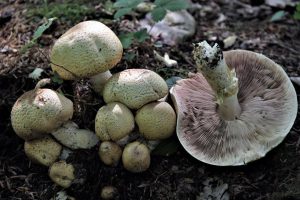 Lamellar. In a young fungus, they are covered with a filmy blanket, which creates a favorable environment for the maturation of spores.Subsequently, the film breaks, hanging in fragments at the edges of the cap and forming a characteristic filmy ring on the stem.
Lamellar. In a young fungus, they are covered with a filmy blanket, which creates a favorable environment for the maturation of spores.Subsequently, the film breaks, hanging in fragments at the edges of the cap and forming a characteristic filmy ring on the stem.
The plates are located often, freely, at the beginning of the mushroom growth they have a white-cream color, gradually darkening to brown with a chocolate tint. The spore powder is also brown.
Leg
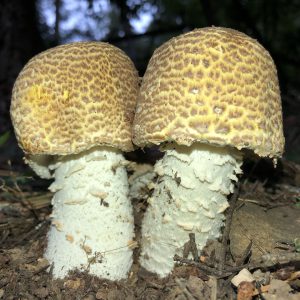 The leg thickness is about 2, sometimes 3 centimeters, rather long, about 10-15 centimeters. The surface of the peduncle is rough, scaly, white or yellowish-grayish, with a slight thickening at the base. The flesh of the leg turns yellow when pressed, oxidizing in air.
The leg thickness is about 2, sometimes 3 centimeters, rather long, about 10-15 centimeters. The surface of the peduncle is rough, scaly, white or yellowish-grayish, with a slight thickening at the base. The flesh of the leg turns yellow when pressed, oxidizing in air.
Pulp
Dense, rather elastic, more brittle in the cap, hardening in the stem as the mushroom ages. The aroma is described in different ways, some consider it to be similar to the smell of aniseed, some compare it to the root of calamus, some - with an almond scent. The taste of the pulp is a little pungent, mushroom, pleasant. On a break or cut, the flesh becomes pink or reddish in color.
Champignons - type, description of mushrooms, where they grow in nature

Main types and characteristics
Champignons are the most popular mushrooms in our time. They are very tasty, healthy and even medicinal, as they contain proteins, carbohydrates and mineral salts. In terms of nutritional value and nutritional value, mushrooms are equated to meat.
These mushrooms can be easily recognized by their appearance. Usually white and less often brown fleshy caps. The pulp is white, but when interacting with oxygen it changes color to red or yellow. The plates in young specimens are pinkish. Over time, they acquire a brown color. The leg is dense, white, up to 10 cm high.
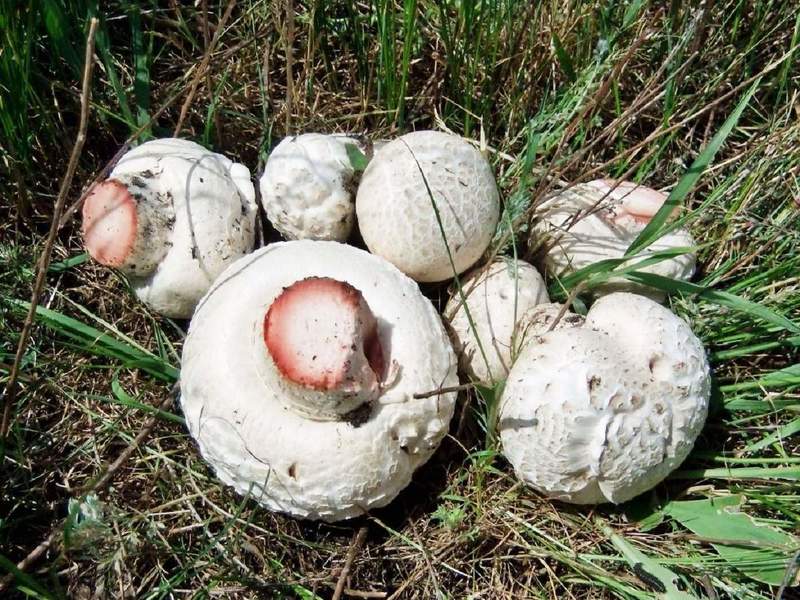
Here are the most popular of them, which won the love of mushroom pickers and ordinary people:
- Garden (double-sided). It grows on cultivated and fertilized soils - in a greenhouse, in a vegetable garden and pasture. In the wild, it is found in temperate countries of Europe, where the soil is completely free of grass cover. Juicy light flesh, which turns pink when broken. White leg, almost hollow, cylindrical in shape.
- Steppe (Bernard). The main place of its growth is desert or semi-desert. This type of champignon loves saline soils. Grows in groups. Can be confused with common champignon. The color of the cap is varied: from white to brown. Plates are located below the cap. The leg is of the same color as the head.
- Two-ring. The people also have the name sidewalk or city mushroom. This is an unpretentious and sharply different champignon from other mushrooms in its family. A rather large hat sits on a fleshy low leg. Loves a warm climate. Fruiting from late May until November.
- Dark scaly. Occurs in deciduous or mixed forests from July to September. The hat is convex. The plates are wide and sparsely located. Hollow white leg. The pulp of the mushroom is also white when pressed, first turns yellow, then turns brown.
- Small-scaled (Benesha champignon). It grows in both coniferous and deciduous forests. His flesh is white, but when pressed, it quickly turns red. In cooking, they are often consumed raw. This species can be called stocky, since a fleshy cap sits on a low, but very dense leg. The plates are located close to each other, pinkish hue.
- Steam. Found throughout Europe in mixed forests. It can also grow in meadows and pastures. Does not like direct sunlight. It is usually harvested in the autumn. The hat has a rounded shape that is covered with scales. There are many thin plates under it. The stem itself is of medium length, but goes deep into the soil and has a thickening at the base. The pulp is white and fleshy, with an interesting chicory scent.
- Augustowski. A rare type of champignon found in Europe. They grow in groups from August to October in the park area, near anthills.The cap, like that of other representatives of champignons, changes shape over time, and is covered with orange-brown scales. The pulp has a pleasant almond scent. The mushroom is quite tall.
- Large spore. It grows in Eurasia. Loves meadow soils rich in organic matter. This species is quite large. The cap is smooth and convex, on which large scales appear over time, and the edges become velvety. Such a cap can only be held by a dense high leg, which thickens at the base. A ripe large-spore mushroom has a peculiarity - a smell that flows from a pleasant almond to a pungent smell of ammonia.
External description
The fruit body of a half-shod champignon consists of a stem and a cap. The diameter of the cap varies between 5-15 cm, and it itself is very convex, fleshy, with dense pulp. In mature mushrooms, it becomes convex-outstretched, even depressed in the central part. The color of the cap of the described species can be yellowish, light brown, or simply brown. Its surface is densely covered with reddish-brown or brown scales. At the edges of the cap, you can see the remnants of a private bedspread in the form of small film scales. At high levels of humidity, the surface of the cap becomes slightly sticky.
The hymenophore of half-shod champignons is lamellar, and the plates in it are often located, but freely. They are very narrow, in young mushrooms they have a pale pink tint, later acquire a meaty color, even turn brown and dark brown, almost black.
The length of the stem of the mushroom varies in the range of 4-10 cm, and its diameter reaches 1.5-3 cm. It comes from the inner central part of the cap, is characterized by a cylindrical shape and great thickness. Inside, it is executed, often just straight, but sometimes it can slightly expand near the base. The color of the stem of the mushroom can be whitish-pink, pink-gray, and, if damaged, acquires a reddish-brown tint. Above the periapical ring, the surface of the leg of the half-shod champignon is completely smooth, but in some specimens it may be slightly fibrous.
Under the ring on the leg, one can see the brownish belts of the volva, which are located a short distance from each other. The surface of the leg may be covered with small scales, sometimes with a baggy light brown volva.
The pulp of the half-shod champignon (Agaricus subperonatus) is characterized by a high density, ranging in color from pale brown to rusty brown. At the stem and cap at the junction, the flesh becomes reddish, does not have a pronounced odor. Some sources indicate that in young fruiting bodies of the described type of champignons, a fruity aroma is slightly noticeable, and in ripe mushrooms, the aroma becomes more unpleasant, and resembles the smell of chicory.
The peri-head ring is characterized by a large thickness, white-brown color, double. Its lower part grows together with the leg. Fungal spores have an ellipsoidal shape, a smooth surface and dimensions of 4-6 * 7-8 cm. The color of the spore powder is brown.
Garden champignon
Garden champignon (lat.Agaricus bisporus)
Garden champignon (lat. Agaricus bisporus)
Common names for this species are cultivated champignon, double-peeled champignon, cultivated champignon.
This type of champignon is quite rare in nature. Grows in large groups in roadside ditches, compost heaps, orchards and fields. However, the garden mushroom is grown industrially in more than 70 countries. It is the most common cultivated mushroom.
Its resemblance to common champignon has given scientists the assumption that this species is a kind of common champignon. But in the process of detailed study in 1906, scientists discovered significant differences between these species, which allowed them to draw conclusions, compare the differences, which ultimately led to the fact thatthat the double-peeled champignon was taken out as an independent species.
The cap of the garden champignon reaches 4-8 cm in diameter, is rounded, the edges are bent. At the end of the edges there are remnants of a torn cotton bedspread. The surface of the cap is smooth to gloss in the middle, smooth and smooth at the edges. Champignon has three varieties: white, cream and brown, of which white and brown are found in nature, and cream is only cultivated. The flesh of the cap is juicy and dense. When cut, turns pink or red.
The plates of the young champignon are pink. Over time, the color changes to dark brown.
The leg bears a well-defined ring. It reaches a height of 4-10 cm. It has a cylindrical shape. It happens, both filled and almost hollow. Mostly white, sometimes with brown spots. The ring is white. Has a characteristic mushroom smell and sour taste.
Due to its taste, it has gained great popularity. Therefore, it is cultivated in very large quantities in many countries of the world, as well as in individual households.
Interesting facts about the dangerous mushroom
Red champignon is widespread in Europe, Central Asia, North America, North Africa. His colonies are also found in Australia, where he was accidentally brought.
Some mycologists note that this mushroom is still edible, but it retains a nasty taste and smell when heat treated.
Antibiotics, agaricin and psalliotin, were isolated from the fruit bodies, acting on gram-positive bacteria (streptococci, staphylococci, bacilli) and the causative agent of salmonellosis. In addition, these substances exhibit anti-cancer activity.
Yellow-skinned peasant is a dangerous mushroom that causes moderate eating disorders
He likes to grow up in the company of edible "relatives", so when picking mushrooms, be extremely careful, pay attention to the characteristic features by which they can be distinguished. And try not to eat
Let this mushroom benefit only as a part of medicinal products.
Poisoning signs and first aid
By the nature of the poisoning caused, it belongs to the first group of poisonous mushrooms - it has a local irritating effect on the digestive system, which quickly manifests itself (within 15–20 minutes, sometimes 1 hour) and usually quickly passes (within 3-4 days). Typical symptoms include:
- increased sweating;
- stomach ache;
- nausea;
- vomit;
- diarrhea.
In rare cases, dizziness or headache is noted. It is noteworthy that the origin of the active poisonous substance has not been established.

- If there is no vomiting, give to drink 4-5 glasses of cool boiled water or soda solution (1 tsp. Soda per glass of water), or a slightly pink solution of potassium permanganate.
- Press on the root of the tongue, induce vomiting.
- Repeat several times.
- After gastric lavage, give enterosorbent (activated carbon - 8-10 tablets, enterosgel, polysorb and others - in accordance with the instructions).
- Provide rest - put to bed, apply heating pads to the stomach and legs to avoid circulatory disorders.
Conduct symptomatic treatment only after the diagnosis has been clarified by a doctor (!).
Growing at home and in the country
The most common mushrooms have long been learned to grow in greenhouses, cellars and garden beds.
It is very important for them to prepare high-quality compost:
- Take 6 kg of straw and 4 kg of manure.
- Lay everything in a prepared hole in layers.
- Water every day and turn with a pitchfork once a week.
- After three weeks, the compost is ready.
The time may vary depending on the feedstock and air temperature, but as soon as the ammonia odor disappears, the mixture can be used. The compost is spread on the beds.
The mycelium itself is best purchased from a responsible seller. When grown outdoors, choose the most shaded area:
- The soil is slightly fluffed.
- Plants, grass, roots should be left, they will help the mycelium to form.
- Sprinkle the surface with mycelium and cover with prepared compost.
- Water as needed.
The first crop, as a rule, emerges after 2.5 months. Sowing can be done in spring, summer or autumn. In winter, the mycelium is covered with fallen leaves and needles.
Description
Large-spore champignon is a very large mushroom with a specific smell.
Hat
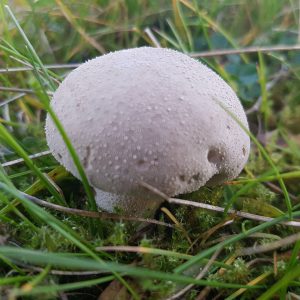 It grows to a very impressive size - in most of its habitats there are specimens reaching 25 cm in diameter, and South Russian champignons, as a rule, are even larger.
It grows to a very impressive size - in most of its habitats there are specimens reaching 25 cm in diameter, and South Russian champignons, as a rule, are even larger.
The shape of the cap in all representatives of this species is convex, has a white color. When ripe, it cracks. The surface is fibrous. The edges of the cap in mature specimens acquire a fringe.
Spore-bearing layer
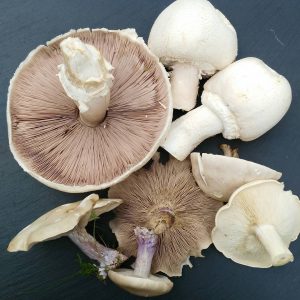 Like other mushrooms, the hymenophore is lamellar. The plates are frequent and free-lying, pinkish in young mushrooms, brown in mature ones.
Like other mushrooms, the hymenophore is lamellar. The plates are frequent and free-lying, pinkish in young mushrooms, brown in mature ones.
Leg
In comparison with the hat, it is not so significant. It is relatively short - about 7 cm and thick (about 2 cm in transverse size). It has the shape of a spindle. The surface of the leg is covered with flaky outgrowths. In the upper third of the leg, a thick ring-shaped formation is observed - the remainder of the velum. The bottom of the ring is scaly.
Pulp
White, strong, slightly reddening when cut. Its smell is defined as an almond aroma, and in old mushrooms it is transformed into the smell of ammonia.
Distribution, period and place of collection
The fruiting season is from May to October. Field champignon is widespread throughout Russia, especially in the north of the temperate climate.
Prefers open spaces, loves fields, meadows, overgrown with grass, found in open forest clearings, in gardens and parks, sometimes in pastures. It can grow not only on plains, but also in mountains. It grows both singly and in very large groups, forms "witch circles".
It can be rarely found with trees, but it is supportive of spruce trees, for this very reason it is quite common in the Crimea, it is found both in the mountains and in the fields. However, he prefers nettles more.
It is ubiquitous in Europe and Asia. In Russia, it grows within the temperate zone of the middle zone, in the Urals and Siberia, as well as in the Far East, in the mountains and foothills of the Caucasus and Crimea.
Cossack champignon (Agaricus sylvicola)
Synonyms:
Coppice champignon (Latin Agaricus sylvicola) is a mushroom of the mushroom family (Agaricaceae).
Hat:
Color from white to cream, 5-10 cm in diameter, first spherical, then prostrate-convex. Scales are practically absent. The pulp is relatively thin, firm; anise smell, nutty taste. When pressed, the cap readily takes on a yellow-orange color.
Plates:
Frequent, thin, free, when the mushroom ripens, it gradually changes color from light pink to dark brown.
Spore powder:
Dark brown.
Leg:
5-10 cm high, thin, hollow, cylindrical, slightly widening at the base. The ring is strongly pronounced, white, can hang low, almost to the ground.
Spreading:
Coppice champignon grows singly and in groups in deciduous and coniferous forests from June to late September.
Similar species:
It would be a big mistake to mistake the pale toadstool (Amanita phalloides) for the champignon. This, one might say, is a classic of toxicology. Nevertheless, the main differences between champignons and representatives of the genus Amanita should be known to every young mushroom picker. In particular, the plates of the pale toadstool never change color, remain white until the end, while in champignons they gradually darken, from light cream at the beginning to almost black at the end of their life path. So if you find a small lonely champignon with white plates, leave it alone. This is a poisoned pale toadstool.
It is much easier to confuse Agaricus sylvicola with other members of the mushroom family.Agaricus arvensis is usually larger and does not grow in the forest, but grows in the fields, in gardens, in the grass. Poisonous Agaricus xanthodermus has a strong unpleasant odor (which is described differently everywhere - from carbolic acid to ink), and does not grow in the forest, but in the field. You can also confuse this species with the crooked champignon or, otherwise, "distinctly nodule" (Agaricus abruptibulbus), but the latter is somewhat thinner, higher, does not turn yellow so readily, and is less common.
Edibility:
Cossack champignon - This is good edible mushroomthat is not inferior to the best mushrooms.
Video about mushroom champignon coppice
Remarks Still, it remains unclear how to distinguish between numerous similar types of champignons, even if professionals cannot agree on this. On the one hand, the mind prompts you to focus on the habitat. On the other hand, this is fully justified only for mycorrhizal fungi, and champignons, like all saprotrophs, in principle can grow everywhere, if there would be fertilization.
Evaluation of taste, medicinal properties, benefits and possible harm
The calorie content of fresh peppers is 27 kcal per 100 grams of product. Fresh mushrooms contain a whole list of vitamins B, E, PP and others. In addition, they also contain useful trace elements: calcium, potassium, manganese, zinc, copper, iron, phosphorus, about 20 essential amino acids. The high-quality protein found in mushrooms is an excellent alternative to meat protein, which the body uses to build cells.
Other useful properties of champignons:
- normalization of the activity of the cardiovascular system;
- lowering the level of "bad" blood cholesterol;
- removes salts of heavy metals;
- mushrooms contain antioxidant substances that fight free radicals.
- mushroom infusion is used to treat wounds;
- in the treatment of diabetes mellitus to lower blood sugar levels;
- folk healers used oven extract to fight typhoid fever.
Doctors warn that it is forbidden to eat any mushrooms for children under 12 years old, pregnant and lactating women, people with exacerbations of chronic diseases of the gastrointestinal tract. Do not forget that mushrooms contain chitin (especially a lot of it in the legs), which is very difficult to digest. Mushrooms are a sponge, they quickly absorb salts of heavy metals, pesticides and nitrates, harmful substances. You should not pick mushrooms near major roads, factories and factories. This is not necessary, because today in stores there is a huge selection of safe bakers grown in an industrial environment.
Evaluation of taste, medicinal properties, benefits and possible harm
Champignon is a generally recognized edible mushroom, although it belongs to the third category of nutritional value. Many consider it a delicacy. The fruit is universal, you can create a wide variety of dishes from it: boil, fry, marinate, stew, dry, even eat fresh. The most delicious and healthy are young specimens with gray-red plates. However, the same type of membranes sometimes frightens off inexperienced mushroom pickers.
Champignons are widely used in medicine and cosmetology. They are used for tuberculosis, jaundice, ulcers and eczema, diabetes mellitus, bronchitis, headache, and they make a drug for the treatment of typhus. Oil extract from them successfully fights skin problems. Some beauty salons offer clients lotions, masks and other beauty products that contain this mushroom. And the price of such balms is quite high.
The use of champignons does not cause fundamental harm. It can only be associated with environmental factors (since fruits absorb harmful substances from the soil and air), as well as with a property common to all mushrooms that it is difficult for the body to digest. Therefore, it is preferable to collect them in clean places, rinse them before cooking. When eating, do not abuse the product, especially for people with liver diseases and children.
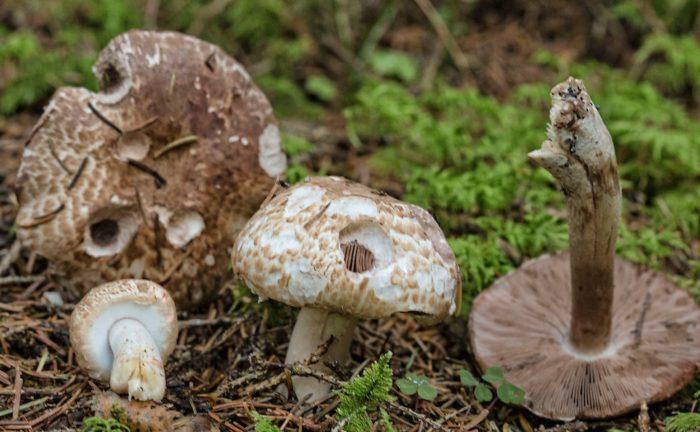
Common champignon (Agaricus campestris)
- Other names for the mushroom:
- Champignon real
- Meadow champignon
- Pecheritsa
Synonyms:
 Description:
Description:
A common champignon cap with a diameter of 8-10 (15) cm, at first spherical, semi-spherical, with a wrapped edge and a private veil covering the plates, then convex-outstretched, prostrate, dry, silky, sometimes fine-scaly at maturity, with brownish scales in the middle, with remnants of a bedspread around the edge, white, later slightly brownish, slightly pinkish in wounded areas (or does not change color).
Plates: frequent, thin, wide, free, at first white, then noticeably pink, later darken to brown-red and dark brown with a purple tint.
The spore powder is dark brown, almost black.
Common champignon has a leg 3-10 cm long and 1-2 cm in diameter, cylindrical, even, sometimes narrowed to the base or thickened, solid, fibrous, smooth, light, one-color with a cap, sometimes brownish, rusty at the base. The ring is thin, wide, sometimes located lower than usual, towards the middle of the leg, often disappearing with age, white.
The pulp is dense, fleshy, with a pleasant mushroom smell, white, slightly pink at the cut, then reddening.
Spreading:
Common champignon grows from the very end of May to the end of September in open spaces with rich humus soils, especially after rains, in meadows, pastures, in gardens, vegetable gardens, parks, near farms, on cultivated land, near housing, on the streets, in the grass, less often at forest edges, in groups, rings, often, annually. Widely spread.
Similarity:
If the common champignon grows near the forest, then it (especially young specimens) can be easily confused with both pale toadstool and white amanita, although their plates are only white, not pink, and there is a tuber at the base of the leg. Still similar to the common champignon, the ginger champignon is also poisonous.
Video about common champignon mushroom:
Grade:
Champignon ordinary - a tasty, healthy, edible mushroom (2 categories), used in a variety of ways, fresh (boiling for about 10 minutes) in the first and second courses, salted, pickled. In terms of the content of proteins assimilated by the human body, it is comparable to the porcini mushroom.
Note: A valuable mushroom of excellent taste, suitable for all types of culinary processing.
Distribution and collection
Champignon august is widespread throughout the forest belt of Europe from Scandinavia to the Urals, preferring coniferous forests with rich soil, mainly with a predominance of spruce.
Often found in parks and forest parks, often the August mushroom can be found near anthills or growing directly from them. This is due to the fact that many species of ants cultivate champignon, as we do, eating and feeding the offspring with special tuberous formations on hyphae (ants do not use fruit bodies and try to prevent their appearance).
The August champignon is found most often in small groups, but grows in whole “villages” on favorable soils.



